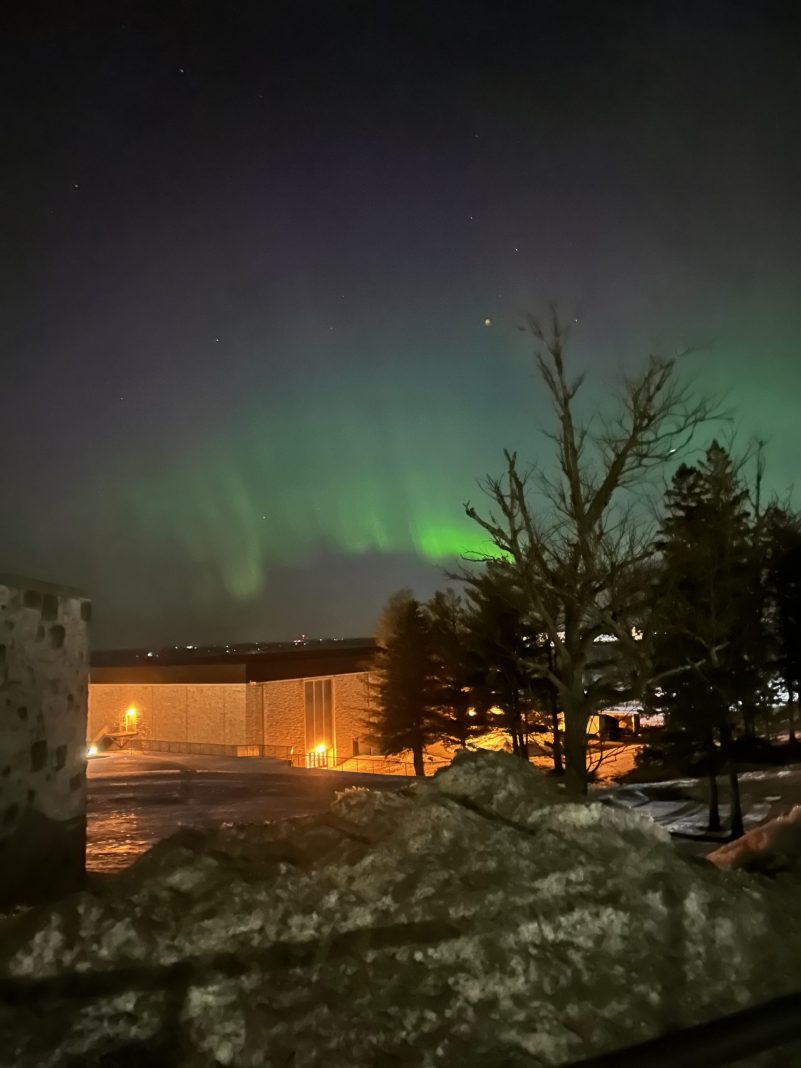
Photo by Kate Linggi
This past month, Minnesotans had the rare and incredible opportunity to experience a radiant feat of nature. From Grand Marais to Red Wing, the northern lights, or aurora borealis, were visible, boasting brilliant hues of green, pink, and purple. Lucky viewers snapped pictures that quickly circulated online, prompting questions about the next possible sighting, or where one could behold the lights themselves.
The aurora borealis is the beautiful result of energized particles from the sun pushing into the Earth’s upper atmosphere. As the particles are redirected back to the poles, magical colors illuminate the sky, putting on an always-unique spectacle for viewers below. While this is an oversimplification of the process, the northern lights are also still largely a scientific mystery.
And Minnesota’s northern locale is a prime spot for viewing. The lights are typically more prominent in places like the far-north Cook County (though recent sightings were reported even in the Twin Cities metro!).
Better yet, International Dark Sky Sanctuaries or Dark Sky Parks—protected areas that are far removed from city lights—are the crème de la crème for viewing. In Minnesota, the Boundary Waters Canoe Area Wilderness as well as Voyageurs National Park have bodies of water that make viewer experiences all the more breathtaking. These areas are also protected from light pollution, which is any unnecessary artificial light in the atmosphere. Light pollution contributes to a multitude of consequences, such as climate change, waste of resources, and harm to living things. It can also make it more difficult to see such phenomena as the northern lights.
While one can venture to a protected Dark Sky Area to experience the lights, it’s important to be conscious of the ways pollution impacts the areas we already occupy. This week (April 15-22), International Dark Sky Week 2023 is seeking to bring awareness to this issue. To see the aurora borealis at its very best, try to cut back on unnecessary outdoor lighting at night. Here are some other tips:
- See them now! The aurora borealis is viewed best September through April in the Northern Hemisphere.
- Stay up to date on the forecast—specifically atmospheric forecasts that predict geomagnetic storms, also known as disturbances in the Earth’s magnetosphere, that often lead to northern lights displays, as seen last month.
- Timing is everything, as their prime viewing period is from 11 p.m. to 3 a.m.
Happy viewing!







